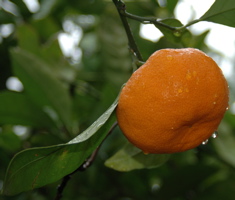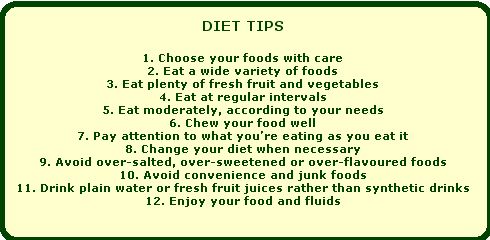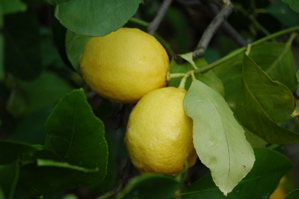SO, WHAT’S THE PROBLEM?
Why do we eat? Three important reasons are: to sustain life, to have energy for our activities, and to maintain health in our body systems.
Do you make conscious choices about your food and drink? Do you worry about your weight? Do you exclude certain types of food? Are you vegetarian or vegan? Do you take acid-alkaline balance into account in your diet? Do you consider the Glycaemic Index of what you eat? Do you follow dietary systems such as food-combining, Montignac, Atkins, macrobiotic, eating for your blood-type? Do you think about eating healthily? Do you know what a healthy, balanced diet is?
A lot of advice from experts about healthy eating is vague or contradictory, leading to uncertainty about what to eat, when to eat it, how to prepare it, and even how to eat it. “You are what you eat”, the saying goes, and most experts agree about this, but little else.
Dietary inadequacy plays an important part in many different problems. These include hyperactivity and attention deficit disorder in children, and, in all age groups, vitamin and mineral deficiency, obesity, skin blemishes, digestive problems, irritable bowel syndrome (IBS), tooth decay, low mood, low energy, energy fluctuations, chronic fatigue, myalgic encephalomyelitis / encephalopathy, diabetes, osteoporosis, joint problems, many illnesses, candida, anaemia, circulatory problems, and heart disease.
Babies underline the extent of the problems. I have seen all too many babies suffering from extreme, obviously painful cramps after breastfeeding or eating formula food, who are completely transformed if the mother alters her diet to fresh food and no junk, or introduces organic sugar-free baby food.
Overeating and undereating can cause problems, in some cases quickly, more often in the longer term. Many of us have difficulty regulating our intake. Our appetite can mislead us. It can fail when we are under-nourished, or become insatiable when we are over-fed. We often crave the things we should steer clear of. Smell and taste can induce illogical desires for inappropriate foods. Inappropriate eating can make us feel guilty, the more so if other people criticize our intake.
Governments are worried about the impact of poor dietary habits on health, not least because of the cost to public health services. There are reports, initiatives and media campaigns about healthy eating and the importance of exercise, but consumer habits are hard to change. Health messages are not specially effective in persuading people to be discriminating about what they eat and drink, at least not until ill-health forces the issue. The impact of the message is undermined when experts disagree about what is good and bad for us.
When food is plentiful, most people don’t want to think too hard about it, nor to spend much time and effort preparing it, if they feel they have a choice. City life creates a distance between food and its source for most city-dwellers. The tempo doesn’t allow for leisurely eating, never mind cooking. Thousands of city workers spend long hours in the workplace. Proper meals are replaced by a snack or sandwich at their desks, often supplemented (sometimes substituted) by frequent caffeinated or sweetened drinks.
True hunger is a devastating experience, as any survivor of famine or brutal prisoner-of-war camps can testify. Such survivors also demonstrate that the human system can survive terrible deprivations. It’s an unwelcome paradox that in societies where food is plentiful, we can not only eat ourselves “silly”, as the saying goes, but sick as well.
Famine and starvation create simple priorities. Water is vital: a human being dies much more quickly through lack of fluid than lack of food. Food nutrients are complex, but basic needs can be supplied relatively simply, as food aid programmes for people in areas stricken by drought and famine have shown. Also, “superfoods” such as spirulina have been identified, small quantities of which provide large amounts of nutrients beneficial to health.
FOOD PRODUCTION AND SUPPLY
Natural foods
Factors which can have an adverse effect on the nutritional quality of natural foods include the effects of different types of packaging and containers; the coatings on food tins; the time food spends in storage; the distance it travels to reach us; the influence of pesticides and herbicides on soil, plants and fruits; the effect of artificial fertilizers on soil quality; the conditions under which animals, fish and poultry are kept; how they are fed; and whether they receive preventive medical treatments such as antibiotics.
It is surprising how many people ignore the significance of food production methods, never questioning the increasingly controversial ways in which food producers try to improve on nature.
Farming practices have changed through the use of machinery and chemicals, which allow for largescale production and intensive use of land. Farming is a business, and a tough and uncertain one at that, so it is not surprising that so many farmers have taken up the opportunities to reduce labour and increase output through the use of large fields, fertilizers, herbicides and pesticides for crop-growing, and battery farming for chickens and eggs, regardless of the impact on the environment or the welfare of the animals involved.
Pesticides
Most pesticides are known to be harmful to fish, so it is rather surprising that large-scale pesticide use continues despite the evidence of related harm to river and marine life. Smaller scale use is common: some farmers naively believe that spreading herbicide round a field only kills unwanted plants and has no effect on their crops.

Pesticides from intensive farming inevitably leave their traces in the foods, and certain levels are allowed as safe, according to the definitions of current knowledge. The amount of pesticide allowable as a residue on foods is measured in milligrams per kilogram and termed the Maximum Residue Level (MRL), the value of which is set much lower than the Acceptable Daily Intake (ADI), the theoretical amount of a chemical which we can consume every day without harm.
Despite this apparent safeguard, there is cause for concern. In Britain, for instance, the organochlorine insecticide Lindane continued to be widely used even after being placed on the EU Black List of dangerous substances. Showing up regularly in food tests, it was found in record levels above the MRLs in milk during the latter half of 1995, apparently because the summer had been very hot. It is highly toxic to humans and wildlife, and is known to disrupt the human endocrine (glandular) system. It can cause acute poisoning as well as chronic, sometimes fatal illness. It is extremely damaging to the environment, and, being a persistent pesticide, remains active for a long time.
It’s even more worrying that when several pesticide residues are present in foods, their combined effect is not known, as most research on safety levels focuses only on single pesticides. With the increasing evidence that pesticide residues damage the human immune system, it must be wise to consider eating organic food only, and especially to provide organic food for the vulnerable, such as babies, the sick and the old.
The incidence of myalgic encephalomyelitis (M.E.) was known to be relatively high among fruit farmers in the UK in the 1980s.. A dairy farmer once described to me her frustration when her 12-year-old daughter became very ill with M.E., and she and her husband realised they would have to leave their farm or send her away to recover. They had no doubt the illness was linked to the chemicals they had been using on their fields.
Manipulated Food
Artificial flavourings, colourings and preservatives, which in the European Union are identified by “E” numbers, are an important element in producing food for distant markets. Food additives have made it possible to improve taste and visual attractiveness, and to preserve foodstuffs from decay for longer than previously. This is often at the expense of natural health-providing nutrients, some of which have to be replaced artificially to make the food worth eating at all.
Foods which have been refined in some way now form a large part of the average Western diet. Type 2 diabetes is now relatively common in many European countries. Many factors contribute to this, but high use of refined sugar is a major one.
Convenience foods for immediate consumption provide instant snacks or meals for individuals and families, at home, work or in any other context. Even simple natural foods like fruits and vegetables are grown to specification, for uniformity in size and colour. Genetic modification of foodstuffs, linked to pesticides, has aroused public opposition in many countries. Like every other modification of natural processes, the real effects of GM foods on the human system won’t be known for a very long time. If they turn out to be bad, a lot of damage will have been done by the time we know for sure. The already known ill-effects on the environment and wildlife give reason for alarm.
Food on a passport
Quicker transport methods have made it possible to import exotic and out-of-season fresh foodstuffs from other countries to provide greater variety all the year round. Paradoxically, there is often quite a gap between the time local fresh produce is picked and the time it appears on a supermarket’s shelves. People whose only experience is of supermarket fruit and vegetables are usually amazed at the difference in taste if they visit areas or countries which have preserved the tradition of individuals bringing their naturally cultivated produce to market each day. The recently coined expression “food-miles” reflects concern at the impact on the environment of jetting food round the world without a particular need.
FOOD MARKETING
With prosperity, there is an abundance of food, and consumers have a wide choice. A food industry driven by market forces readily caters for factors such as convenience, cheapness and gratification which can motivate food choices. It is an apt reflection of a society driven generally by greed.
Believe that, you’ll believe anything
Food and drink marketing is geared to selling for maximum profit. Advertisements focus on taste and appearance. UK food labelling gives a lot of information, but still falls short of identifying whether a product qualifies as healthy or not. Many people assume that if a product is sold in a food store it must be healthy, or at least it can’t be bad for us.
It’s not surprising that new generations, surrounded by plenty, often don’t know the difference between healthy nutrition and oral gratification. Foods high in fats, sugar and salt seem tastier than natural foods. Drinks loaded with sugar and flavourings are more attractive than plain water. Children of course don’t question what food is, and where it comes from. Some children even believe that chips grow on farms, through confusing the nursery rhyme “old Macdonald’s farm” with the hamburger chain.
Children are exposed to advertising propaganda on television from an unreasonably early age. In the UK, there has been government concern, and restrictions have been placed on advertisements for junk food aimed at children. In 2006 a programme of healthier school meals was introduced. Some parents condemned this as an infringement of personal freedom, and took pride in passing burgers and chips through the school gates to prove their point.
Controlling obesity
Weight control is a primary concern in Western societies, especially as increased obesity and lack of fitness among children is taking its toll in an upsurge of serious adult diseases, especially of the heart. There are many fashionable and not-so-fashionable ways of reducing bodyweight. Surgery to remove body fat is an extreme and usually short-term solution. In recent years, other types of surgery have become available.
Most restrictive reducing diets carry the disadvantages of being short-lived, socially isolating and often energy-reducing. Many reduce bodyweight in the short term, only to lead to an increase over a longer period. People on “slimming” diets are often tempted to skip meals, especially if they find it difficult to control the amount they eat once they start, but this leads to a vicious circle of hunger, overeating and ever-increasing weight gain.
The overweight person who wishes to lose weight may be fighting a veritable army of adverse factors. Internally, there may be excessive appetite, stimulated by overindulging in refined foods heavily laden with sugar or salt from the earliest age, or by the need for “comfort” in times of crisis. Our ability to metabolize and utilize foods can be changed dramatically by hormonal factors, illnesses or changes in body chemistry triggered, for instance, through certain drugs. Externally, there may be constant temptation to eat enticing, filling, non-nutritional foodstuffs, because of advertising, availability, or the example of people around enjoying them at all times of the day.
Balanced information about losing weight and gaining health is sometimes hard to glean among the wealth of fashionable and faddish “slimming diets”. Guilt about being overweight and/or overeating can add a heavy emotional burden which makes rational decisions about the right weight-reducing strategy even more difficult.
Low weight and eating disorders
In Western societies, thin is considered beautiful, especially among women, which has created pressure on young people in particular to aim at the lowest possible bodyweight. This is known to be a factor in the eating disorders anorexia nervosa and bulimia, although of course these potentially serious diseases are usually triggered by a wide range of much more complex causes. Anorexia has a very high mortality rate, so it is essential to recognise it quickly and seek professional treatment.
The myth that slimness in itself means good health and fitness is common, especially among sports participants. It is one of the reasons why anorexia among athletes is often not recognized until it is very far advanced. Many people do sport in order to keep slim while eating as much as they like of tasty but non-nutritional products and drinking excessive amounts of alcohol.
People often imagine that top competitors follow rigorously controlled, healthy diets. In fact many eat the most careless combinations of non-nutritional convenience and “junk” foods, often in defiance of the best advice given them by dieticians and nutritional experts. Looking lean is not the same as being fit, and competitors can wreck their chances of success through faulty diet planning. Poor diet can be one of the reasons why problems more often associated with obesity, such as heart disease, can occur in thin fit-looking people.
Gaining weight, strength and energy is as much of a problem for people who are underweight through illness as reducing fat is for the overweight. In anorexia, there is resistance to eating, because the victim is always convinced that his or her body is grossly bloated, even when in fact it has become skeletal. For the person suffering or recovering from a debilitating illness, such as lung disease or AIDS, the appetite is often impaired, and it can be difficult to ingest enough energy-enhancing foodstuffs without upsetting the digestive system.
Do we need supplements?
Concerns about the denaturing of our foodstuffs have given rise to a booming market in food supplements. The fact that we can no longer rely on our normal foods to provide all the vitamins and minerals we need was borne out a few years ago by a survey reported in the British national press, which showed that some oranges sold in supermarkets contained no vitamin C at all. The survey took place before supermarkets stocked organic fruit and vegetables. The situation, hopefully, has changed with the availability of organic foods, but the possibility that we might need supplements still needs to be taken into account.
It is widely thought that we may need to take antioxidants, especially vitamins C and E but also vitamin A, selenium and zinc, to counteract the effects of oxidation, or free radical damage, which has been linked to many degenerative illnesses, including Alzheimer’s disease, heart disease, certain cancers, diabetes and cataracts. Oil of Evening Primrose is often recommended by doctors and nutritionists to help balance the female hormonal cycle.
If in doubt, it’s best to work out with the help of your doctor or nutritionist what your individual needs are, whether you need supplements, and if so, how to take them. It’s not advisable to go out and buy a whole range of pills to try to cover all eventualities, as some may not be complementary with each other, some you may not need, and some may be difficult for you to absorb. Thinking through the dietary options is also essential, just in case you are tempted to rely on supplements for your essential nutrients in order to eat and drink a “junk” diet. Top sports competitors are surprisingly prone to doing this, rather than taking the trouble to buy and prepare more adequate foodstuffs which would serve their digestive and energy needs better.
Choosing wisely
It’s easy to identify what isn’t good for us. The list has to include refined sugar, refined flour, fatty foods, fried foods, prepared meals, processed products, sweetened products, salted products, trans-fats, preservatives, additives, artificial flavourings, colourings, confectionery, “snack” and “junk” foods, fizzy drinks, caffeine and alcohol.
Practical guidelines for choosing the best eating pattern for yourself include:
* Eat regularly, to suit your energy needs
* Vary your diet
* Choose foods of benefit to health and nutrition
* Include as much variety of locally grown fresh fruits and vegetables as you can
* Grow your own vegetables and herbs
* Take note of how well you digest different foodstuffs:
= Avoid foods which cause bloating or wind
= Avoid foods which cause constipation or diarrhoea
* Take note of adverse reactions:
= Avoid foods which cause symptoms of food intolerance
* Change your eating pattern if you go light-headed between meals
* Alter your diet if your needs change because of lifestyle changes, different exercise patterns, illness, hormonal changes or changes associated with growth or aging
Be flexible, keep informed
Diet is a matter of personal choice. it’s only through education and positive experience that we can learn to make reasoned choices for ourselves and future generations.
However healthy we consider our eating intake and patterns, we should always be prepared to change our diet, if or when our needs change. It is especially important to adjust a child’s diet during the different growth phases. For adults, dietary needs may change through illness or stress, or if there is a change of lifestyle involving more or less exercise or new types of exercise. For females, dietary requirements are likely to vary during pregnancy, while breast-feeding, at the menopause, or even during the phases of the menstrual cycle.
Diet is a very complex subject, and it’s easy to be overwhelmed by the science and the conflicting theories, or to latch on to some simple formula for “ideal” healthy eating and stick with it unquestioningly. The more reasoned approach is to be informed, and to keep an open mind. Be receptive to new information, be flexible, and above all be guided by your own reactions. This is what the expression “gut feeling” really means.



